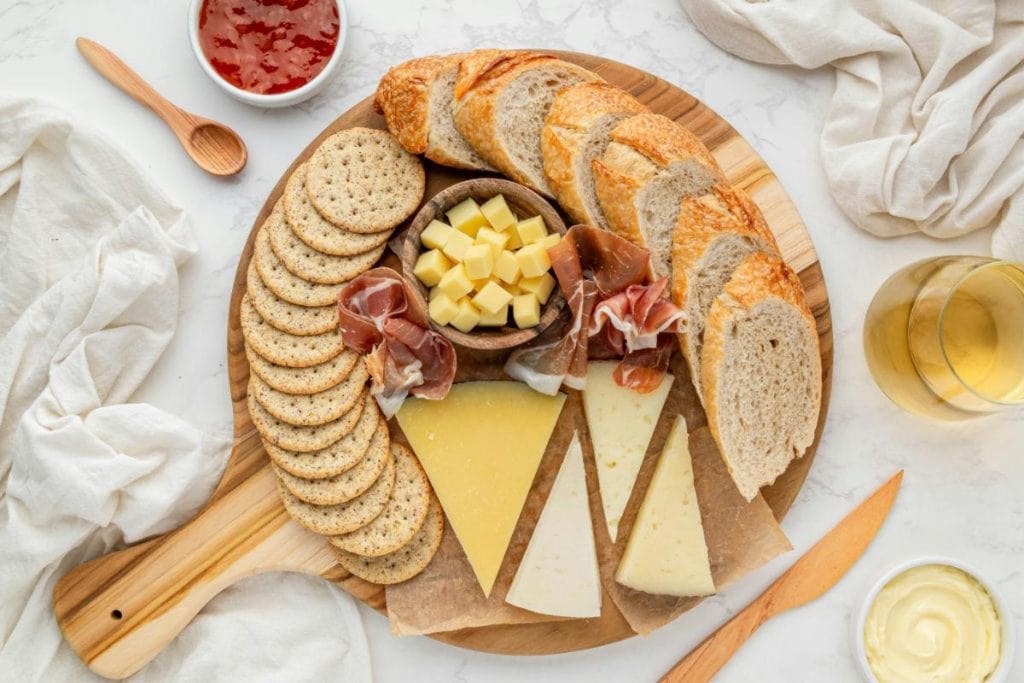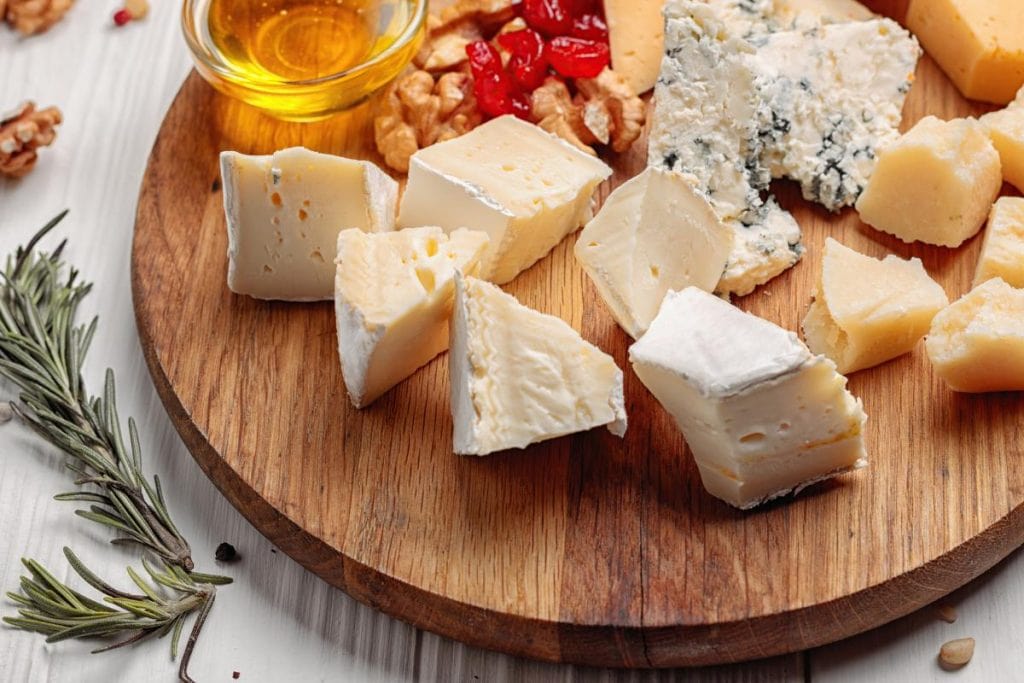
Creating a well-balanced cheese board is an art form that goes beyond simply arranging a few cheese wedges on a platter. It’s about crafting a flavor journey for your guests, one that excites the palate and showcases the diverse world of cheese. Whether you’re hosting a dinner party or enjoying a quiet night in, these tips will help you create a harmonious and exciting cheese board that will impress even the most discerning cheese lovers.
The Importance of Balance
Before we dive into the specific tips, let’s talk about why balance matters. A well-balanced cheese board offers a variety of flavors, textures, and experiences. It allows your guests to explore different taste combinations and find new favorites. By thoughtfully selecting and arranging your cheeses and accompaniments, you’re not just serving food – you’re creating an interactive tasting experience.
Now, let’s explore the eight key tips for achieving that perfect balance on your cheese board.
1. Mix Textures
Texture plays a crucial role in our perception of food, and cheese is no exception. A great cheese board should offer a range of textures to keep things interesting.
- Soft cheeses: Think creamy brie or gooey camembert. These provide a luxurious, melt-in-your-mouth experience.
- Semi-soft cheeses: Options like havarti or young gouda offer a bit more structure while still remaining creamy.
- Hard cheeses: Aged cheddar or parmesan bring a firmer texture and often a bit of crunch from protein crystals that form during aging.
- Crumbly cheeses: Feta or blue cheese add a unique textural element that contrasts nicely with creamier options.
By including a variety of textures, you’re not only catering to different preferences but also creating a more engaging tasting experience. The contrast between a silky soft cheese and a firm, crystally aged cheese can be truly delightful.
2. Combine Milk Types
Different animals produce milk with distinct flavor profiles. By including cheeses made from various milk types, you’re adding depth and complexity to your board.
- Cow’s milk cheeses: Often the most familiar, these can range from mild to sharp. Think cheddar, brie, or gouda.
- Goat’s milk cheeses: These tend to have a tangy, sometimes earthy flavor. Cypress Grove Humboldt Fog cheese is a great example.
- Sheep’s milk cheeses: Often slightly sweet and nutty, like manchego or pecorino.
- Mixed milk cheeses: Some cheeses combine milk from different animals, offering unique flavor profiles.
Mixing milk types allows you to showcase how the same cheesemaking process can yield different results depending on the milk used. It’s a great way to expand your guests’ cheese horizons.
3. Balance Strong and Mild Flavors
A good cheese board is like a well-composed symphony – it needs both bold statements and subtle notes to create a harmonious whole.
- Strong flavors: Blue cheese, aged gouda, or strong cheddars can provide bold, attention-grabbing flavors.
- Mild flavors: Fresh mozzarella, mild goat cheese, or young Swiss cheese offer more subtle tastes.
The key is to arrange these in a way that allows tasters to cleanse their palates between stronger flavors. You might place a mild cheese next to a strong one, or suggest a tasting order that alternates between bold and subtle flavors.
4. Include Different Ages of Cheese
The age of a cheese significantly impacts its flavor profile. Including cheeses of various ages adds another layer of complexity to your board.
- Fresh cheeses: These are young and often mild, like ricotta or fresh mozzarella.
- Young aged cheeses: Aged for a few months, these develop more flavor while retaining moisture. Think young cheddar or gouda.
- Aged cheeses: Cheeses aged for longer periods (often a year or more) develop complex, often nutty or sharp flavors. Examples include aged parmesan or vintage cheddar.
By including cheeses of different ages, you’re offering a mini lesson in how cheese flavors develop over time. It’s fascinating to taste a young and aged version of the same cheese side by side.
5. Add Complementary Accompaniments
Cheese doesn’t exist in a vacuum. The right accompaniments can enhance, contrast with, or complement cheese flavors in delightful ways.
- Sweet options: Honey, jams, or fresh fruits can balance salty or tangy cheeses.
- Savory additions: Nuts, cured meats, or olives add depth and complexity.
- Tangy elements: Pickles or mustards can cut through rich, creamy cheeses.
Don’t forget about the vehicle for your cheese. Offer a variety of crackers, bread, or even vegetable slices. Each can interact differently with the cheese, creating new flavor combinations.

6. Consider Salt Levels
Salt is a crucial component of cheese flavor, but too much can overwhelm the palate.
- High-salt cheeses: Feta, blue cheese, or aged parmesan tend to be on the saltier side.
- Lower-salt options: Fresh cheeses or young, mild varieties often have less pronounced saltiness.
Balance is key here. Pair saltier cheeses with milder ones, and consider offering unsalted crackers or fresh fruit to help reset the palate between tastings.
7. Incorporate Varying Levels of Richness
The fat content in cheese affects both its flavor and how it feels in your mouth.
- Rich, creamy cheeses: Triple-cream bries or mascarpone offer a luxurious, buttery experience.
- Leaner options: Many fresh cheeses or harder aged cheeses have a lower fat content.
Alternating between rich and leaner cheeses prevents palate fatigue and keeps the tasting experience interesting. A bite of a rich, creamy cheese followed by a sharper, leaner option can be a delightful contrast.
8. Play with Temperature Contrasts
Temperature can significantly affect how we perceive flavors and textures in cheese.
- Room temperature cheeses: Most cheeses are best served at room temperature, where their flavors are fully expressed.
- Chilled cheeses: Some fresh cheeses are delightful when served cool.
- Warm cheeses: Certain soft cheeses, like brie, can be gently warmed to create a gooey, indulgent treat.
Experiment with serving temperatures to create interesting contrasts. A cool, fresh cheese next to a room-temperature aged cheese can highlight the differences between them.
Bringing It All Together
Creating a balanced cheese board is part science, part art, and all delicious. As you apply these tips, remember that the goal is to create an enjoyable experience. Don’t be afraid to experiment and find combinations that excite your palate.
Start with a diverse selection of 3-5 cheeses, add a few thoughtfully chosen accompaniments, and arrange them in a way that’s both visually appealing and easy to navigate. Encourage your guests to try different combinations and share their discoveries.
Remember, there’s no one “perfect” cheese board. The best one is the one that you and your party guests enjoy. So have fun, be adventurous, and savor the wonderful world of cheese!
